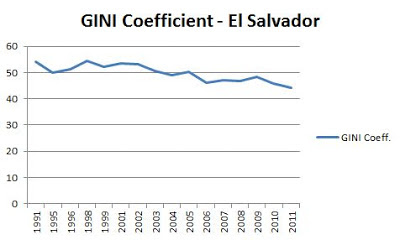The threat to corn and bean farmers posed by climate change
Catholic Relief Services has released the results of a study which focuses on the impact of climate change on the production of two of El Salvador's basic foods: corn (maize) and beans. The study, titled Tortillas on the Roaster , identifies real threats to production of these crops by small farmers in Central America and calls for policies to address the risk. From the executive summary of the report: There is an urgent need for maize/bean smallholder farmers to deal with the impacts of climate change. The study finds that the impacts of climate change on maize/bean production systems are significant, and they could be felt as soon as the next decade. The TOR model projects that mean temperatures will rise by 1°C by the period 2010 to 2039 (2020s), and by 2°C by the period 2040 to 2069 (2050s). Minimum and maximum daily temperatures will rise, and water deficits will increase due to less precipitation and higher evapotranspiration rates. The modeling shows that maize pr...
